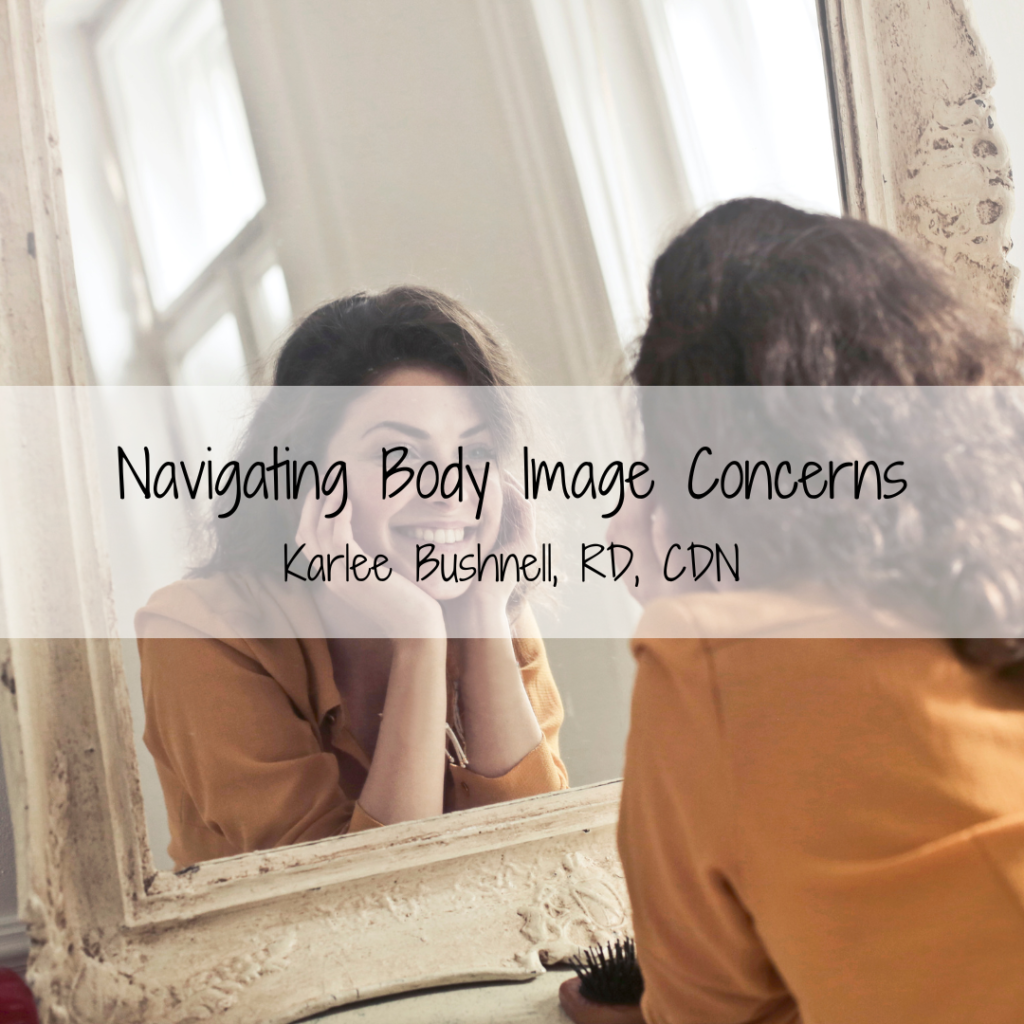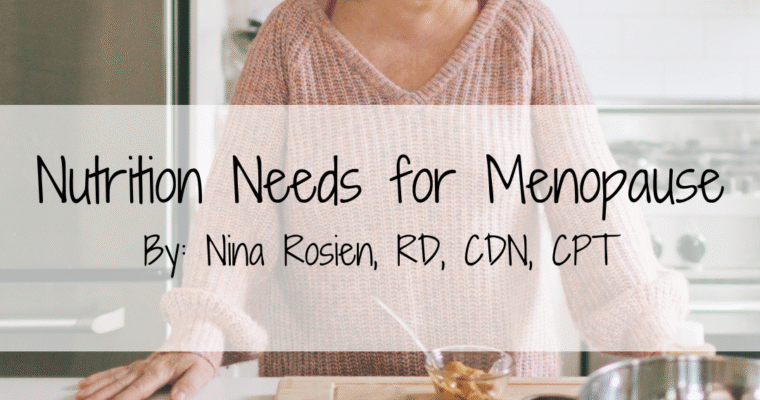
Body image is something that’s challenging for many individuals, especially in the summer months. Summer can be a time of adjustments in routine and schedule, different activities, changes in clothing, vacations, seeing more people… all of which can bring on a heightened awareness and struggles relating to body image. The hope of this post is to provide you with a better understanding of what body image is, and tangible skills to help improve your relationship with your body as well as cope with body image challenges.
So to start us off, what is body image? It’s really a culmination of many things. Body image is:
- Defined as one’s thoughts, perceptions, and attitudes about their physical appearance
- How you see yourself when you look in the mirror
- Or when you picture yourself in your mind – including your memories, assumptions, and generalizations
- What you believe about your own appearance – including your height, shape, and weight
- How you feel about your body
- How you sense and control your body as you move
- How you physically experience or feel in your body
Researchers tend to group ways to process body image into three different areas including perceptive or our perception of our body, affective or the emotional experience of our body and cognitive or the thoughts, ideas and beliefs about our body.
Body image is also very complex, highly individualized and not static because it impacts so many areas of our brain. In fact, a minimum of nine different areas play a role in some component of processing body image, which contributes to the idea that negative body image is more of a collection of multidimensional symptoms. It’s also an ever-changing process because of how easily our perception, emotions and thoughts can shift from day to day or even minute to minute. That is why the idea of cultivating an improved body image does not mean simply having a positive experience with your body at all times – it is much more intricate than that.
What is positive vs negative body image?
A study assessing positive body image defined some tenants of this as:
- Body appreciation
- Body image flexibility
- Attunement (body responsiveness, mindful self-care)
- Positive/self-accepting body talk
- Body pride
- Broad conceptualization of beauty
- Self-perceived body acceptance by others
Negative body image (also known as body dissatisfaction), can include:
- Distorted perception for one’s shape or function of the body
- Feelings of shame, anxiety, and self-consciousness
- Feelings that their bodies are flawed in comparison to others
- More likely to suffer from feelings of depression, isolation, low self-esteem, and obsessions with changing their bodies
Negative body image stems from many factors, including but not limited to:
- Belief systems that glorify conventionally thin or “acceptable” bodies, and weight loss
- Scrutiny of those who are in larger bodies and/or have gained weight
- Gossiping, teasing, bullying about body size/physical appearance
- Weight stigma
- Diet culture
- Media and social media
- Life changes that affect how our bodies look and function, like puberty, pregnancy or menopause
- Ethnicity and culture
It’s important to note that negative body image is both a symptom of and a significant risk factor for the development of eating disorders (EDs), and the worse the dissatisfaction, the greater the risk.
What are skills to improve negative body image?
Seek support: If you’re struggling with body image or ED/disordered eating symptoms, seek help from a mental health professional who specializes in these issues such as a Registered Dietitian or a therapist. It can also be helpful to speak to a trusted loved one for additional support.
Practice mindfulness: This is a skill that is transferable and helpful in many areas of life, but particularly when it comes to body image can give us an opportunity to recognize what’s coming up for us and choose how we’d like to respond. Sometimes that’s ignoring a thought altogether or sometimes that’s making a decision to reach into our toolbox and pull out a strategy to help.
Work on self-talk: Create and repeat positive affirmations about your body and its abilities. Focus on what your body can do rather than how it looks. When cognitive distortions or negative thoughts arise, challenge them with evidence-based reasoning and compassionate responses.
Some examples of more neutral or positive affirmations to tuck into your toolbox could include:
- “I’m in the process of learning to accept my body”
- “Today is a tough day, but I will work to be gentle with myself and treat my body with respect”
- “I am grateful for my arms that let me hug my best friend/partner/pet”
- “How my body looks has nothing to do with my worth”
- “Even if I don’t like or love how my body looks, I can still choose to nourish it”
- “It’s OK for bodies to change”
You may notice in these phrases are examples of more body gratitude or body respect. As stated, body image is complex and exists on a spectrum. It’s not simply loving or hating your body. Many clients actually find it useful to learn that you can practice improving other areas of body image such as more body appreciation or body acceptance as a way to foster a more positive or neutral body image. A great place to start is to ask yourself, “What would I say to a friend in this position?” or “How would I treat a loved one going through what I am going through right now?”. It’s difficult, but try to aim for that same level of self-compassion. Additionally, some of my clients like to write down these affirmations on sticky notes and place them around their homes in areas such as the bathroom mirror, where they get dressed for the day or near their workspaces for gentle reminders throughout the day!
Social media usage: Another area that can be helpful when it comes to improving body image is being mindful of social media usage. Research has shown that social media is a contributor to negative body image. Boundaries can be very necessary here! Perhaps you’d benefit from unfollowing certain accounts that promote unrealistic beauty standards or just plain make you feel bad about yourself (this includes people you know personally! Exert your right to use the unfollow or mute button) or following more accounts that promote a greater range of beauty standards. Perhaps a boundary would be to limit screen time. Or perhaps a boundary is to take a break from certain social media channels completely. Boundaries do not have to be black and white either, but checking in with what’s most helpful for you and allowing this to ebb and flow. For example, some of my school age clients find that summer break offers more free time that they may end up spending on these apps with harmful consequences – could this be an opportunity to set better boundaries around social media and go do something more meaningful like meet up with a friend or read a good book?
Find clothing that fits and is comfortable: Wearing uncomfortable clothing or items that do not fit properly can bring a constant negative physical reminder to our bodies. Dressing your here and now body in clothing that fits and feels comfortable is one way you can show your body respect and can decrease the amount of time spent thinking about your body. This can be a tip that is easier said than done, both for financial reasons and that many stores do not carry a wide enough range of sizes. However, please remember that it is the job of the clothing to fit you and not the other way around. Clothing sizes are arbitrary and say nothing about your worth as a person. Some clients benefit from cutting the tags off of clothing so that the size is no longer visible. Additionally, to make shopping more financially feasible, consider going thrift shopping. On the flip side, it’s recommended to donate anything that doesn’t fit you comfortably – so perhaps making a donation while at the thrift store as well?
Body image is extremely complex and something that everyone struggles with at times. As stated, it’s experienced more than just simply “good” or “bad”. Different seasons or seasons of life, such as summer or a summer break can be even more challenging times. Addressing these concerns is an important part of ED treatment, as it helps protect clients against relapse and set them up for lasting recovery. If you feel as though you’re struggling with body image concerns or even with implementing some of the above tips, I encourage you to seek support and/or share more with your current treatment team.
Resources:
- https://www.nationaleatingdisorders.org/body-image-0
- Cook-Cottone CP. Incorporating positive body image into the treatment of eating disorders: A model for attunement and mindful self-care. Body Image. 2015 Jun;14:158-67. doi: 10.1016/j.bodyim.2015.03.004. Epub 2015 Apr 15. PMID: 25886712.
- Fardouly, J., Willburger, B. K., & Vartanian, L. R. (2018). Instagram use and young women’s body image concerns and self-objectification: Testing mediational pathways. New Media & Society, 20(4), 1380–1395. https://doi.org/10.1177/1461444817694499
- Jennifer B. Webb, Nichole L. Wood-Barcalow, Tracy L. Tylka. Assessing positive body image: Contemporary approaches and future directions. Body Image. Volume 14. 2015; 130-145. ISSN 1740-1445 https://doi.org/10.1016/j.bodyim.2015.03.010.


